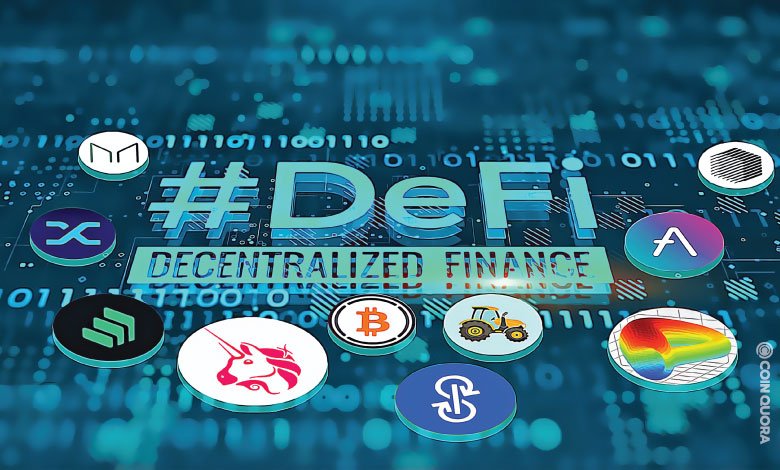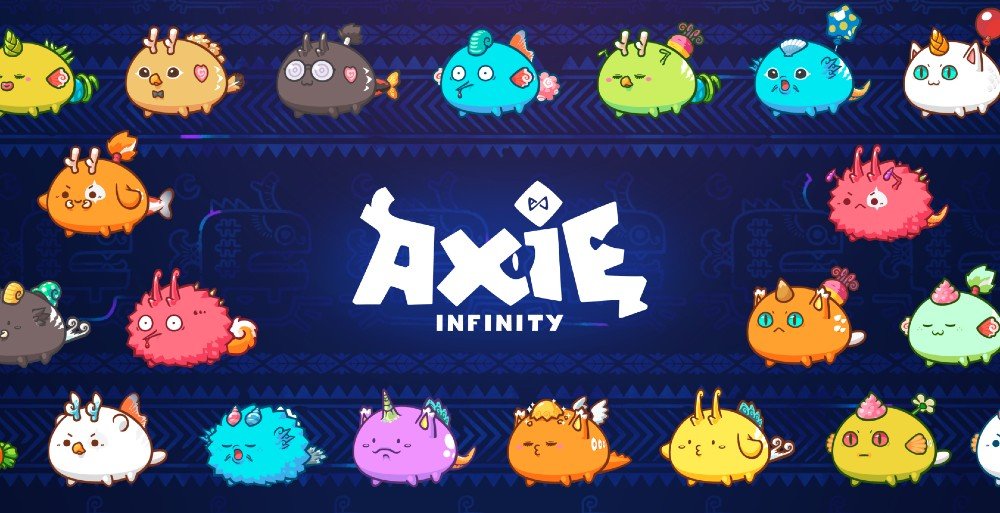
Recently, I had an interesting conversation about new DeFi trends with Michael Hearne, the CEO of Decentral Publishing. We talked about what kind of weird and wacky things we expect to see coming in the future of decentralized finance. Most people know about the DeFi summer of 2020 and how financial tools to rival the traditional financial system broke onto the scene. But it wasn’t just decentralization and disintermediation that bloomed. Something that gained its name as “weird DeFi” also emerged as part of the crypto tapestry.
When the term first started popping up a couple of years ago, people seemed to call it weird DeFi because the concepts were so outside the box from traditional finance that even savvy financial people had a hard time wrapping their minds around flash loans with smart contracts and streaming money. Then, as DeFi became more popular—and infused with meme culture—food-themed projects like SushiSwap, Yam, and Spaghetti started giving weird DeFi a tongue-in-cheek connotation filled with inside jokes.
Today, weird DeFi is weird because it’s been so iterated away from anything resembling traditional finance that everything feels upside down once again. Decentralized finance is moving away from its skeuomorphic origins and into a completely new realm. So, it looks like new DeFi trends are continuing to grow by changing, just like Helen said in the movie Bridesmaids.

Here are some of the weird and hot new DeFi trends across the decentralized finance landscape that Michael and I talked about.
Weird DeFi: Save and spend
MICHAEL HEARNE: “Things like micro-lending have been around for a while, that’s not weird. But some of these societal trends, when they’re joined with blockchain, have really exciting possibilities. These new lending services can raise the standard of living for normal people and challenge banks and intermediaries. DeFi lending is better for everyone that matters in the transaction: both the lender and the borrower.”
He’s right. What if the average person could save money and spend it at the same time? Weird idea, right? Ah, how perfect for a weird DeFi concept! With things like liquid staking and self-paying loans, you can do exactly that. And…it seems to be a big trend in decentralized finance.
Liquid staking
On proof-of-stake protocols, you can stake crypto to earn rewards. Staking became a popular part of DeFi but the problem with self-staking is that your assets are tied up in the staking contract. With liquid staking, your assets are tied up, but then a DeFi service issues you a tokenized version of your asset, which you can then use elsewhere while your staked coins earn yield. Examples of this are Lido DAO and Fantom.
Self-paying loans
Self-paying loans are a similar concept to liquid staking. You can read about them in more detail here. But with platforms like Alchemix, you can deposit DAI and ETH into a vault, which generates yield for you over time. In the interim, Alchemix issues alUSD or alETH up to 50% of the original amount deposited in the vault. Once you have your synthetic Alchemix asset, you can swap it, spend it, or invest it elsewhere.
Weird DeFi: GameFi earning
MICHAEL HEARNE: “Gaming is going to be one of the biggest onboarding ramps for crypto and DeFi adoption. It’s part of a shift in our economy as we continue to see the effects of the internet and tech innovations. It’s an example of the new economy that can create money in ways that were previously unimaginable. The concept of P2E is not new, it’s just been restricted to people like athletes and other small subsets of people. GameFi opens it to everyone.”
If you ask boomers, the idea of gamifying anything and everything is sophomoric and ridiculous. Many (#NotAll) of the older generation are put off by the need to make a meme, a joke, and a game out of everything we do. But, market trends are all you need to look at to see that gamification works. GameFi uses decentralized finance, NFTs, and blockchain games to create play-to-earn (P2E) opportunities. This is definitely a weird DeFi trend to pay attention to.
Axie Infinity

One of the most popular P2E games is Axie Infinity, a game where you grow and battle Axie pets. Players can earn SLP (Small Love Potion) tokens, which can also be traded on DEXs like SushiSwap and Uniswap. The company’s token, AXS, went parabolic in the summer of 2021, reaching an all-time high of $164.90 in November, up from $3.20 in June.
Aavegotchi
If you really want to get DeFi about it, Aavegotchi is a fun P2E game that uses NFTs on the Aave network. It’s reminiscent of Tamagotchis, which many millennials probably remember from the good old days. The interesting thing about Aavegotchi is that you can stake its utility token, GHST, within the game to earn rewards.
Hopefully you were a kid once, and hopefully you also lamented the fact that no one would pay you to play games—lucky you, you’ve survived to see it come to fruition. P2E games will be and already are huge. And integrated with decentralized finance, who knows what kind of cool yield bearing projects we’ll see in this weird DeFi trend.
Hot DeFi: DAOs and governance tokens
MICHAEL HEARNE: “DAOs are some of the most exciting things in DeFi and all of crypto. They’re working on a major issue of how to cooperate and self-govern. This is happening in the microcosm of tech and business where the impacts are purely financial, but the model will be expanded into governments too. That’s radical. Governance tokens are also a preventative measure to keep the current tech generation from becoming the next plutocracy. I also believe as an investment opportunity, DAOs have the potential to be part of the zeitgeist next year and could become the next massive digital asset.”
While decentralized finance is cool and all, many people complain that some of the dApps and protocols aren’t actually that decentralized. That’s why one of the growing new DeFi trends involves decentralized autonomous organizations (DAOs) and governance tokens. More and more projects are decentralizing into DAOs, whose governance is community managed and which issues tokens that stakeholders can use to vote on the future of the projects and its development. Even platforms that didn’t start out as DAOs are decentralizing.
dYdX
The popular DEX dYDx launched a governance token in August of 2021, putting its money where its mouth is when it comes to decentralization. Several of the other popular DEXs like Uniswap and Compound already have governance tokens, and this hot DeFi trend seems to be gaining momentum as platforms decentralize and airdrop governance tokens to early adopters.
Messari governor
The more DAOs that are created, the harder they are to keep up with. If you have governance tokens and are involved in the community of a project, using your votes and helping shape the future of the project, it can become a lot to manage. Messari Governor is a platform that offers a portal for compiling governance information for many different DAOs.
Hot DeFi: Digital identity and KYC
MICHAEL HEARNE: “Digital identity is one of the core problems that has to be solved for DeFi to reach its full potential. Identity is not just in DeFi, it’s used everywhere in life. Almost everything you do requires some proof of identity—that makes it a core piece that touches every sector of life, especially as we go more digital. It’s both a problem and an opportunity. We can’t get rid of ID, but we can manage it. Instead of Meta collecting your data and using it, you’ll own your identity and rent it to people.”
This may be a bit controversial in some people’s minds, but nevertheless, it seems to be one of the hot new DeFi trends. Until now, there has been quite a problem bridging the gap between KYC, decentralization, regulation, and usability. On one hand, decentralized finance was created to circumvent the barriers and gatekeeping in legacy finance. That often includes KYC. But at the same time, lack of regulatory clarity has made the longevity of many projects questionable at best. If DeFi can strike a balance between decentralization and personal privacy while also securing and reducing risks, adoption will hit lightning speed.
ARCx
A “DeFi passport” is how ARCx is contributing to digital identity (DID) and verification. The idea is to improve capital efficiency by providing an on-chain credit score to users, which could then open customized options based on the financial health of the Ethereum wallet history. It could actually end up being useful for increasing efficiency, if done right—though some are skeptical on-chain credit scores simply reintroduce financial gatekeeping.
Bloom
Another platform with DID solutions is Bloom, which collects KYC and provides it to any DeFi platform that requires KYC. This identity verification should create opportunities for tailored services and can also remain non-custodial, keeping the privacy and security of the end-user.
Weird DeFi: your imagination
MICHAEL HEARNE: “The ability to create and innovate things in the tech and crypto world is only limited by human imagination and the operability of the code—it’s crazy. What you imagine can affect real-world assets as they’re digitized. Things that we can imagine today can get so far out there, we laugh, but that’s just the beginning. The most exciting innovations are the ones we haven’t thought of yet.”
The last of the weird DeFi trends that Michael and I talked about is one that we don’t see yet—because it hasn’t been thought of. The weirdest and hottest trends, of course, become so because no one imagined them before. 15 years ago we didn’t see crypto in our future. A decade ago we didn’t see smart contracts in the future. Five years ago we didn’t see DeFi, and today, we don’t see the actual future in complete clarity.
We can project what new DeFi trends seem to be emerging. We can even roll up our sleeves and get involved in decentralized finance through participation, governance, and development. But one thing is certain, no one knows exactly what DeFi will look like in 12 months, let alone five years—and that’s a good thing. The new DeFi trends of tomorrow can come from your imagination.
New DeFi trends in the new year

Who knows what the future of decentralized finance truly holds. Maybe all of these hot or weird DeFi trends will expand and splinter off into their own segments of the ecosystem. Maybe something completely off everyone’s current radar will become a pillar of DeFi in the next year. Who knows! That’s the beauty and the weirdness of the space. What do you think some of the new DeFi trends will be in 2022?
About the Author

Michael Hearne
About Decentral Publishing
Decentral Publishing is dedicated to producing content through our blog, eBooks, and docu-series to help our readers deepen their knowledge of cryptocurrency and related topics. Do you have a fresh perspective or any other topics worth discussing? Keep the conversation going with us online at: Facebook, Twitter, Instagram, and LinkedIn.


